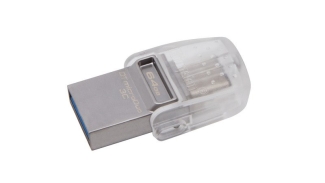Názor k článku Nové verze aplikací: Mapy umí navigovat, Počasí nabídne dynamické mapy od del42sa - Under the terms, Via has been granted a...
-
del42sa (neregistrovaný)
Under the terms, Via has been granted a 10-year cross-license to the relevant parts of Intel's patent portfolio, which will let it make so-called x86 compatible chipsets and processors for the notebook and desktop market. That is, Via can make chips that will run Windows or Linux software or both and largely function like today's Pentium or Athlon chips.
Although functionally similar, Via's products ultimately must bear an original design. The company's chipsets must use an independently developed bus--the data path that connects the processor to main memory--and feature an independently developed pin structure, the array of tiny wires that lets a chip plug into a motherboard. The buses and pin structures can't be compatible with Intel products.
These two requirements will ultimately guarantee that Via's processors will work only with Via's chipsets and vice versa.Via chipsets that conform to the settlement will not work with Intel processors, once a large market for Via. These terms are actually similar to the terms of the Intel-Advanced Micro Devices settlement that allowed AMD to manufacture the Athlon processor. The Athlon runs the same software as the Pentium, but has a completely different bus.
The settlement, though, phases in over time. For the first three years, Intel has agreed not to sue Via for making processors that come with buses and pin structures that are similar to Intel's products. Similarly, Intel has granted Via a license to make chipsets that are pin- and bus-compatible with Intel products for four years, and has agreed not to sue Via or its customers for using pin- and bus-compatible chipsets for another year beyond that.
http://news.cnet.com/2100-1006-995845.html
It’s well known that Intel’s x86 cross-licensing agreements with AMD and Via place strict requirements on what these companies can do while still maintaining their x86 licenses, largely to keep these companies from selling off their license or sub-licensing other companies to design x86 CPUs. Or to put this another way, Intel’s x86 license agreement is designed to keep AMD and Via as the only other x86 CPU designers and to prevent anyone else from becoming an x86 CPU designer by buying the license or the company.
The FTC has not gone so far as to require that Intel drops these provisions, but it does weaken them. If either AMD or Via has a “change of control” (i.e. a buyout/takeover/merger/joint-venture), Intel cannot immediately take the resulting company to court to terminate the license. Intel is required to enter in to good-faith negotiations with the new company to continue x86 CPU design and can only begin court proceedings after a certain period of time. As far as we can tell this does not require that Intel extend a license to a buyer of AMD or Via, but it does require that they consider it. If Intel does not act in good-faith in these negotiations, then the FTC can sanction Intel over it.
The big question of course is whether this will lead anywhere. x86 CPU development is a uniquely expensive and time-consuming endeavor – just because AMD or Via could work with another company doesn’t mean there’s anyone else out there that wants to. NVIDIA has long been considered a candidate for entering the x86 market, but as far as we can tell these terms are to protect the x86 market as a whole, and are not just there to allow NVIDIA to enter the market.
The final requirement of the settlement specifically pertains to Via. Via’s x86 license was scheduled to lapse in 2013 – Intel is required to offer a 5 year extension to Via. Note that this doesn’t compel Via to take the extension or under what terms Intel must offer it, but ultimately Via must be given the option to extend their x86 license to 2018.
http://www.anandtech.com/show/3839/intel-settles-with-the-ftc/2
-
Dominik Dobrozenský|22. 11. 2024
-
Dominik Dobrozenský|22. 11. 2024
-
Jan Olšan|22. 11. 2024
-
Dominik Dobrozenský|21. 11. 2024
-
Dominik Dobrozenský|20. 11. 2024





























